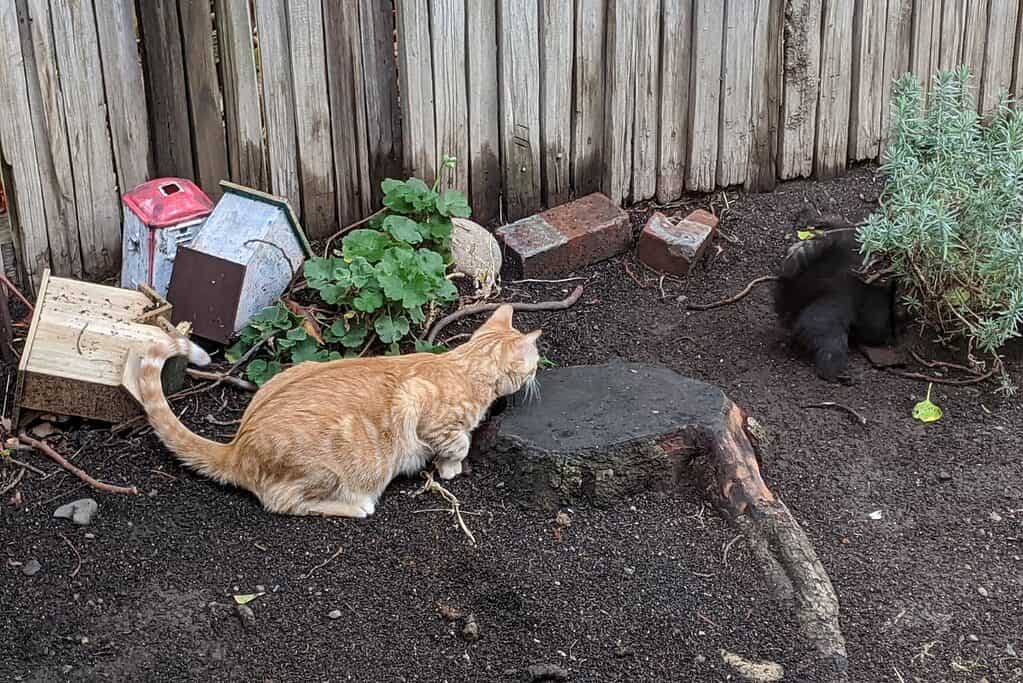Domestic cats are descended from wild cats, and while they may be cute and cuddly, their hunting instincts are deeply ingrained in their behavior. Despite being commonly kept as indoor pets, domestic cats’ natural hunting instincts can still be observed in their behavior, even when no birds or rodents are around.
Cats express their hunting instincts in a variety of ways such as their tendency to stalk and pounce on toys or furniture, their love of hiding in small spaces, and their tendency to sleep for long periods of time.
Hunting Instincts in Domestic Cats
Domestic cats are descended from wild cats and they still retain a lot of instinctual behaviors. In the wild, cats need to hunt for food to survive, and they have developed a set of skills and behaviors to help them catch prey and to stay alive.
For example, cats have excellent eyesight, hearing, and sense of smell, which helps them locate prey animals even in the dark. They also have sharp claws and teeth, which they use to catch and kill their prey. Finally, cats have a highly flexible spine and powerful leg muscles, which allow them to pounce on their prey with great speed and agility.
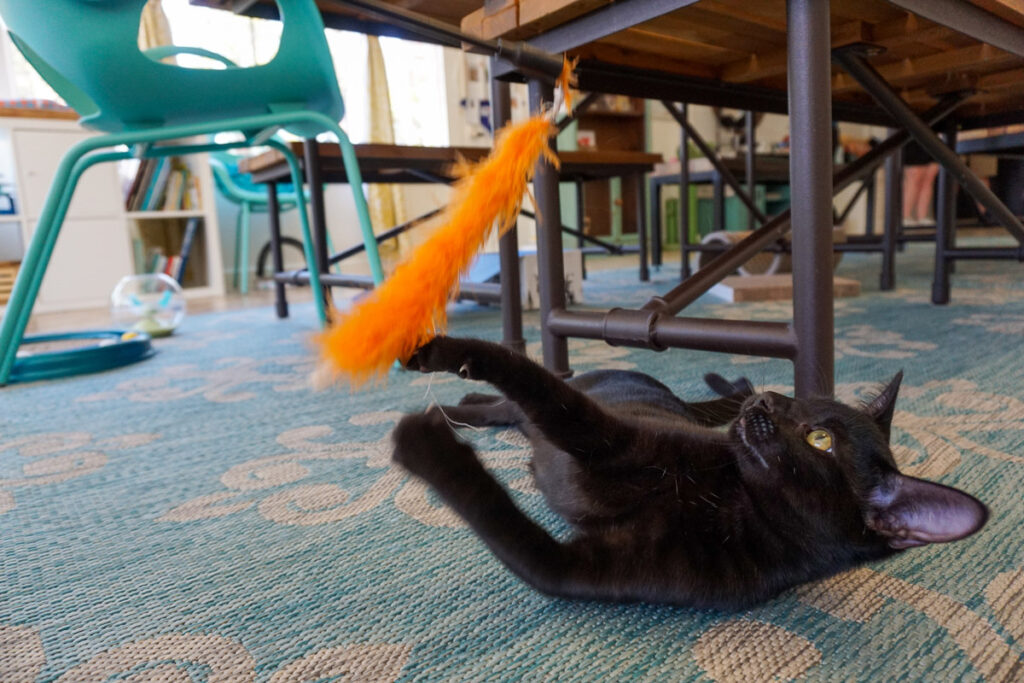
Even though cats kept as household pets are no longer required to hunt for their food, they still retain these same hunting instincts. For instance, cats may still try to catch birds or rodents that they see outside, even if they have a full bowl of kibble waiting for them indoors.
Effects of Hunting Instincts on Indoor Behavior
The natural hunting instincts of cats can have a significant impact on their behavior when they are kept as indoor pets.
Cats love to stalk and pounce
One of the most common behaviors that cats exhibit indoors is stalking and pouncing. This behavior is a direct result of their hunting instincts, as cats are trying to simulate the experience of stalking and catching prey.
Cats may stalk and pounce on toys, furniture, or even their owners. They may also hide behind objects and wait for the perfect moment to launch an attack. This behavior is usually harmless, but it can sometimes result in scratches or bites, especially if the cat is feeling particularly excited or threatened.
Cats love to hide
Cats also love to hide in small spaces, such as under beds, in closets, inside of boxes, suitcases, or behind furniture. This behavior is a result of their hunting instincts, as they are trying to find a secure place to ambush their prey.
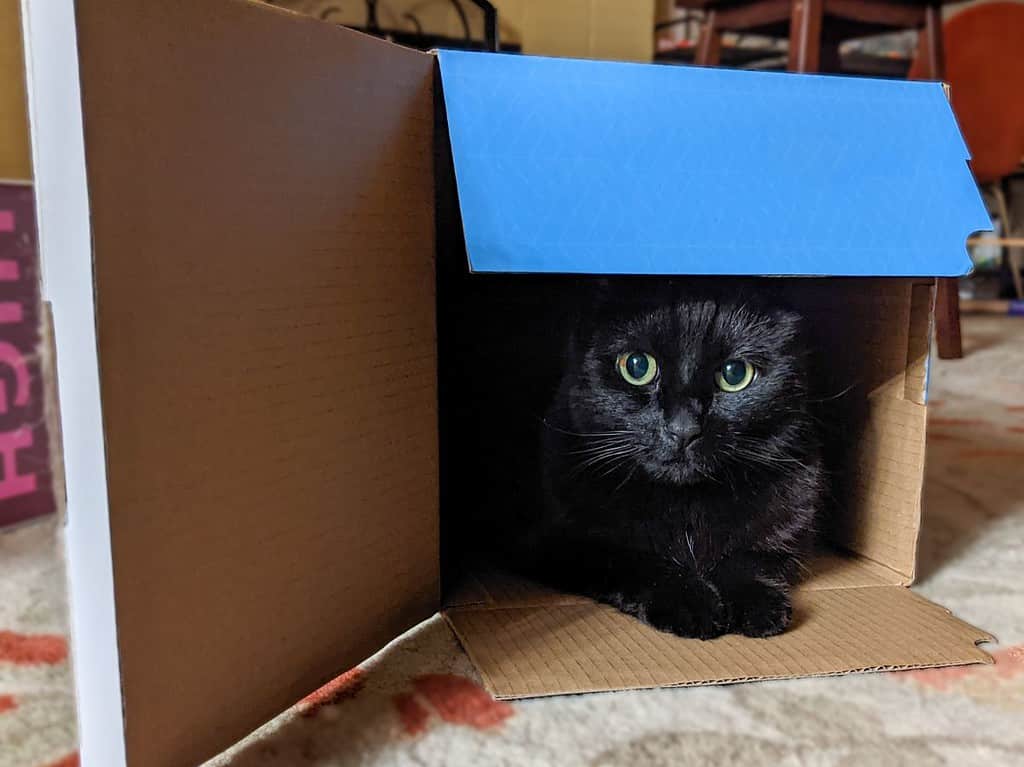
Providing your cat with plenty of hiding spots can help them feel more secure and relaxed in their environment. You can create hiding spots by placing boxes or paper bags around the house, or by providing a cozy cat bed in a secluded corner.
Cats sleep a lot
Cats are known for their love of sleep, and they can often be found napping for hours at a time. This behavior is also related to their hunting instincts, as they conserve energy for when they need rapidly act to either catch prey or ride and hide.
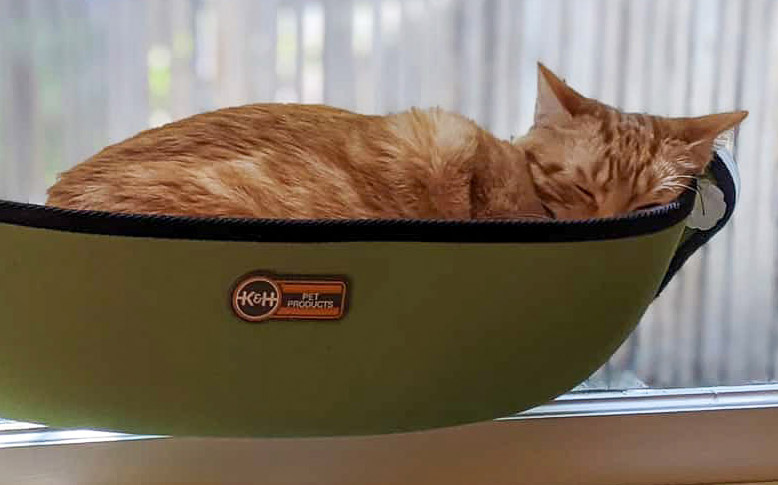
Cats may sleep for up to 16 hours a day, but they are usually able to wake up quickly if they hear or smell something interesting. Providing your cat with plenty of cozy sleeping spots, such as a warm bed or a sunlit windowsill, can help them feel comfortable and relaxed in their environment.
Keep your cat mentally and physically stimulated
Cats need mental and physical stimulation to keep them healthy and happy indoors. Without enough stimulation, they may become bored, anxious, or destructive.
There are many ways to provide your cat with the stimulation they need. Here are a few ideas:
Provide cat puzzle toys
Puzzle toys are toys that challenge your cat’s cognitive skills and keep them mentally stimulated. There are many different types of puzzle toys available, such as treat dispensers or puzzle balls, that require your cat to use their problem-solving skills to get to the reward inside.
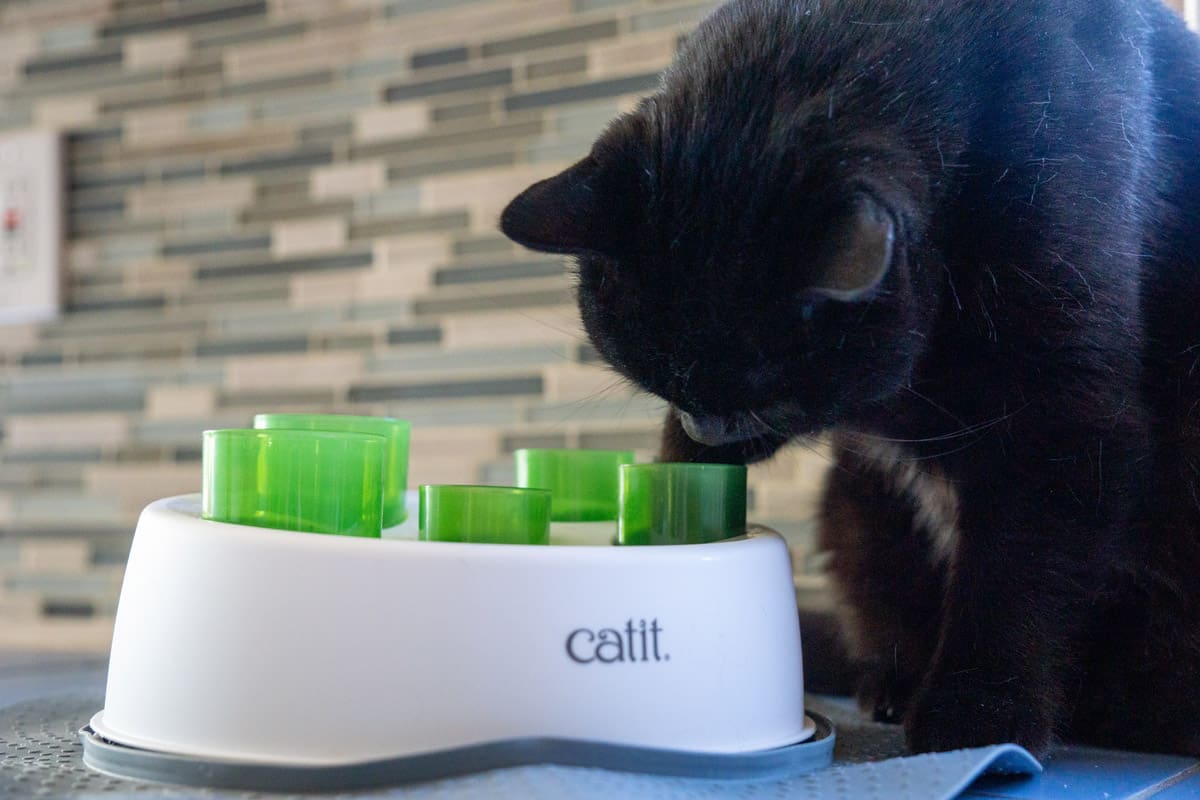
These toys can help simulate the experience of hunting for prey and provide your cat with a sense of satisfaction and accomplishment when they succeed.
Encourage playtime with your cat
Playing with your cat is an excellent way to provide them with physical and mental stimulation. You can use interactive toys, such as feather wands or laser pointers, to get your cat moving and engaging in active play.
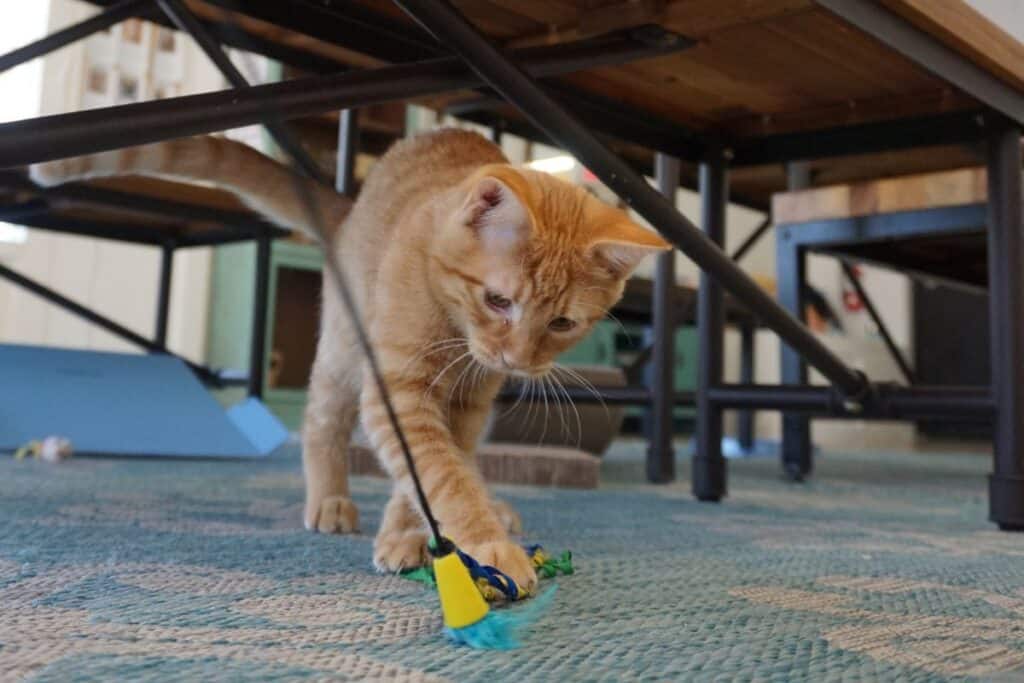
Playing with your cat can also help strengthen the bond between you and your pet and provide them with a sense of companionship.
Provide vertical spaces for your cat
Cats love to climb and explore their environment from different angles. Providing your cat with vertical spaces, such as cat trees or shelves, can give them opportunities to climb and perch in high places.
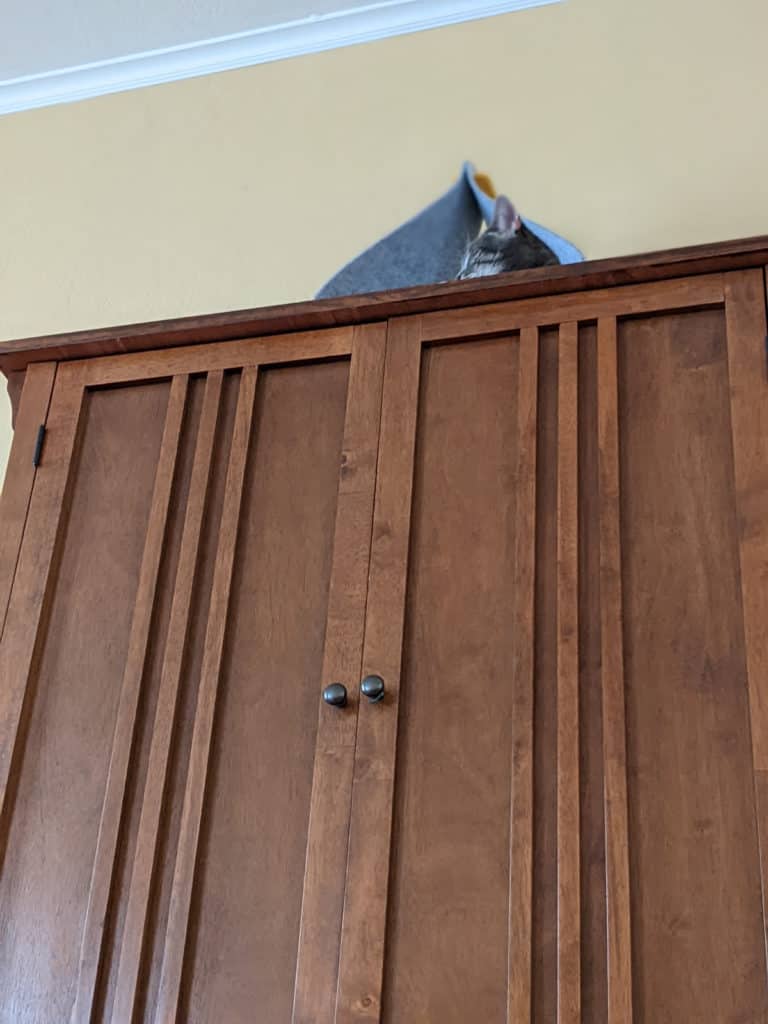
This can help fulfill their natural desire to survey their surroundings and simulate the experience of hunting prey from a high vantage point.
Rotate toys to keep your cat interested
Cats can quickly become bored with the same toys over time. Rotating your cat’s toys regularly can help keep them interested and engaged in play.
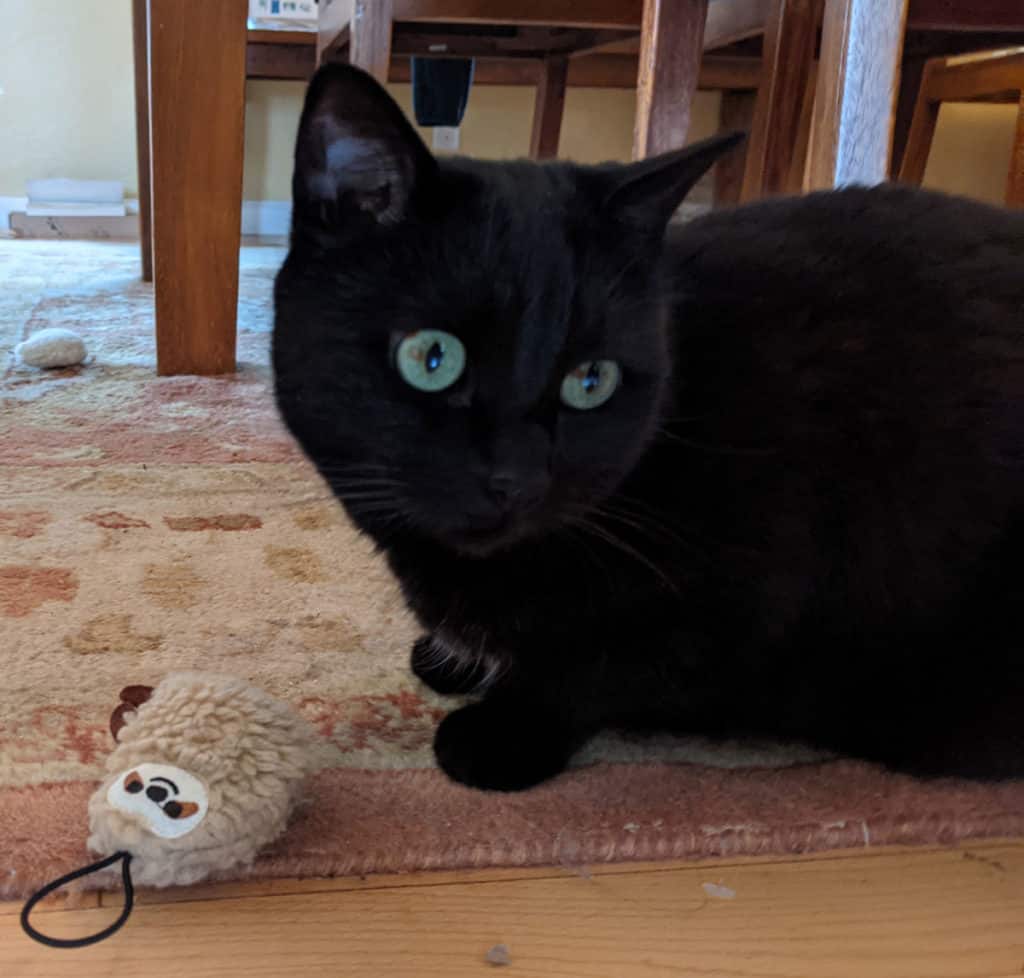
You can also make your own DIY toys, such as crumpled paper balls or cardboard boxes, to provide your cat with new and exciting play opportunities.
Adapt your cat’s natural instincts to make indoor living more stimulating
Domestic cats‘ hunting instincts are deeply ingrained in their behavior, even when they are kept as indoor pets. Stalking and pouncing, love of hiding, and sleeping for long periods are all behaviors that are related to their natural hunting instincts.
Providing mental and physical stimulation, such as puzzle toys, playtime, vertical spaces, and rotating toys, can help keep cats happy and healthy indoors.
By understanding your cat’s natural instincts and providing them with a stimulating environment, you can help ensure that they lead a fulfilling life as a beloved indoor pet.
References
Cecchetti, M., Crowley, S. L., Goodwin, C. E., & McDonald, R. A. (2021). Provision of High Meat Content Food and Object Play Reduce Predation of Wild Animals by Domestic Cats Felis catus. Current Biology. https://doi.org/10.1016/j.cub.2020.12.044
Cecchetti, M., Crowley, S. L., & McDonald, R. A. (2021). Drivers and facilitators of hunting behaviour in domestic cats and options for management. Mammal Review, 51(3), 307-322. https://doi.org/10.1111/mam.12230
Dantas, L. M., Delgado, M. M., Johnson, I., & Buffington, C. T. (2016). Food puzzles for cats: feeding for physical and emotional wellbeing. Journal of feline medicine and surgery, 18(9), 723-732. https://journals.sagepub.com/doi/pdf/10.1177/1098612X16643753
Pyari, M. S., Uccheddu, S., Lenkei, R., & Pongrácz, P. (2021). Inexperienced but still interested–Indoor-only cats are more inclined for predatory play than cats with outdoor access. Applied Animal Behaviour Science, 241, 105373. https://doi.org/10.1016/j.applanim.2021.105373

